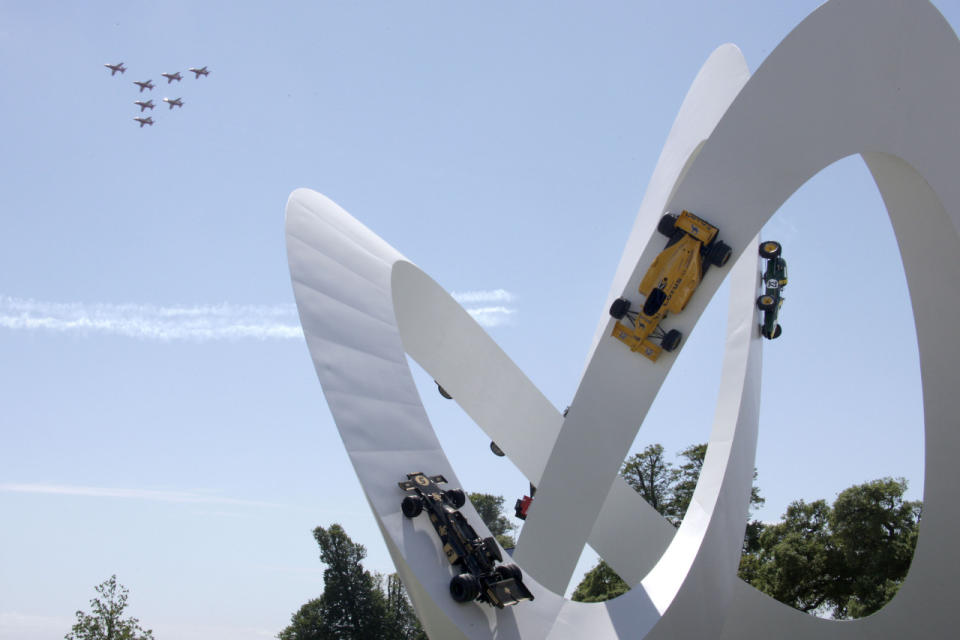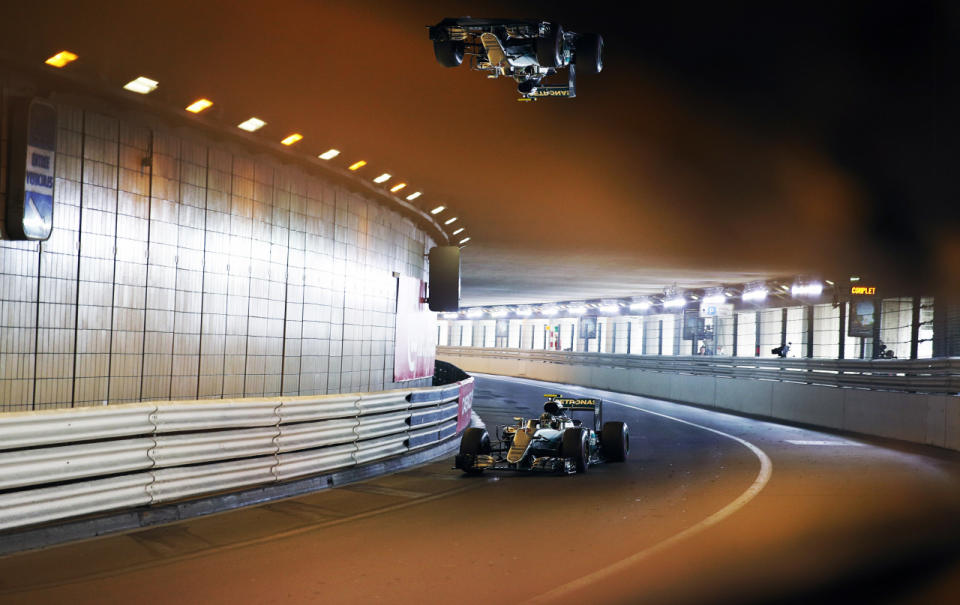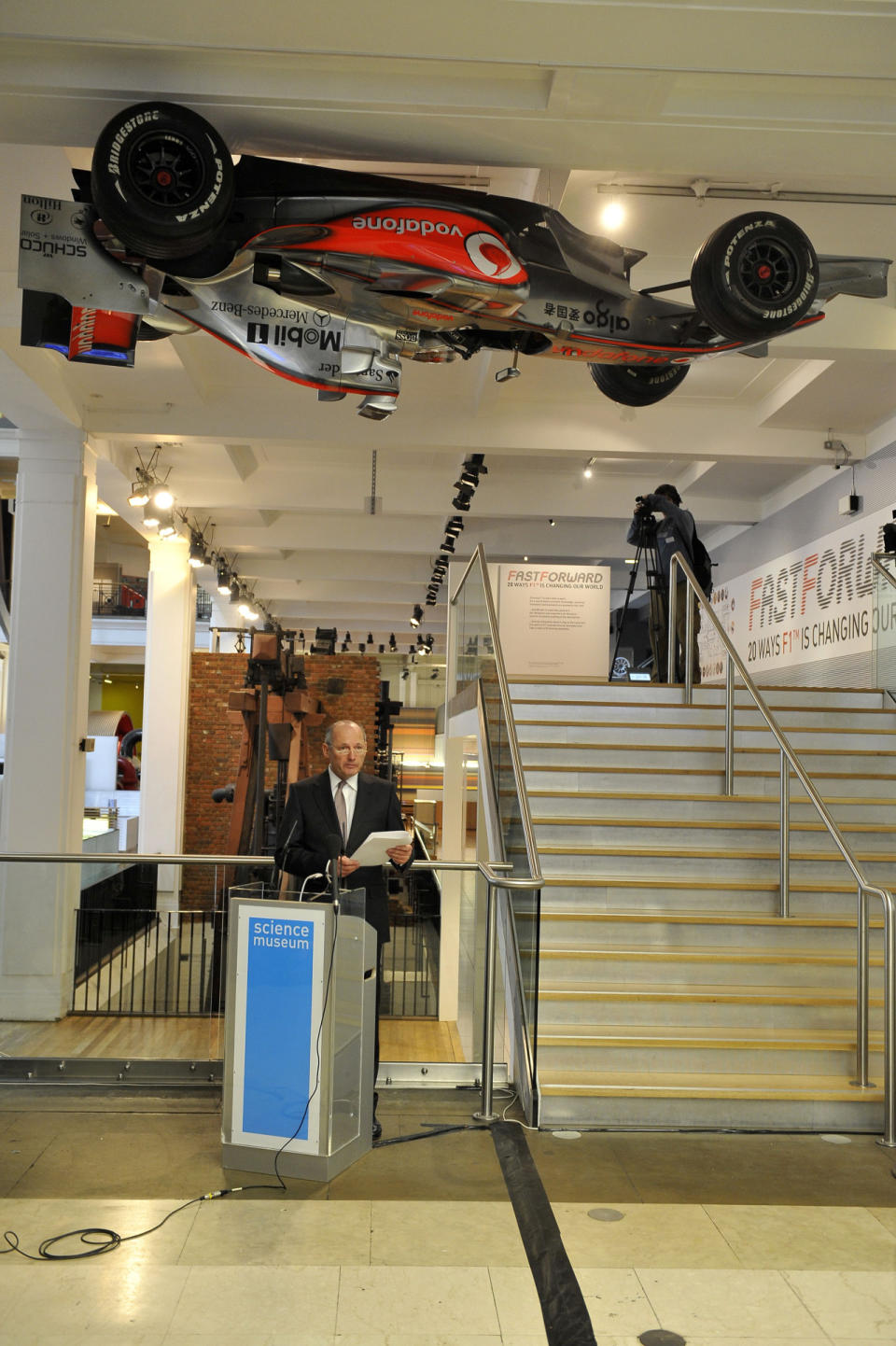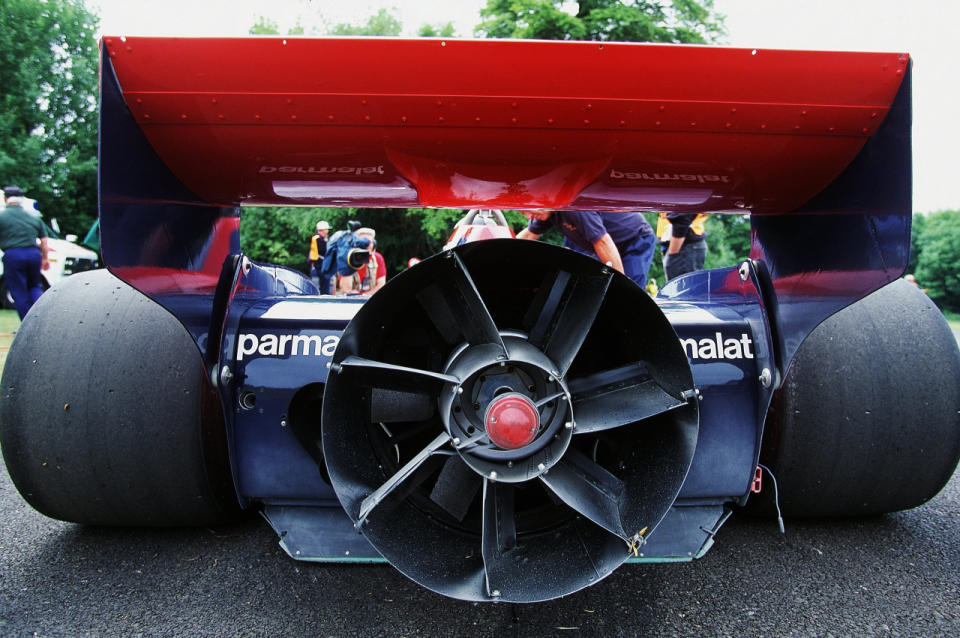Can an F1 car drive on the ceiling?

It’s one of those timeless questions in F1, is an F1 car capable of driving upside down?
Spoiler alert: The answer is yes, no and for a short time.
It all depends on your definition of ‘driving’…
Why an F1 car could drive on the ceiling

This is an easy one. If by ‘drive’ you mean travel upside down for a short distance without falling to the floor then, yes, any F1 car can drive on the ceiling.
Now, how the car gets on to the ceiling and how its mechanical bits work once it’s inverted are not questions to bother us at this point.
At its simplest, this is just a matter of how much downforce the car develops.
An unfuelled car and driver combo must weigh at least 702kg; add in a little fuel and let’s say the whole thing weighs 710kg.
The aerodynamics on an F1 car – the wings, the way the body creates downforce – can push cars into the ground with a pressure of 2,000-3,000kg at top speed.
Turn the whole thing upside down and that force is pushing up, just like the wings on a plane.
If the upward forces are equivalent to 2,000kg (kilogrammes are, strictly speaking, measures of mass) and the downward forces are 710kg – the weight of the car – then that car is going to stay stuck to the ceiling.
In fact, F1 cars generate enough downforce to pull off this trick at much less than their maximum speed.
How much less than their maximum speed is a matter of conjecture – F1 teams keep downforce figures secret – but estimates range from just 90mph (Canadian engineering expert Dr Afzal Suleman), through 120mph (ex-Jordan technical boss Gary Anderson) and above.
The aerodynamicists at North Carolina’s A2 Wind Tunnel attached a 40 per cent size model of an IndyCar to their (very expensive) wind tunnel ceiling, hooked up so that it moved only up and down.
Search for the video online – the car sucks itself on to the ceiling when the airspeed is turned up to 100mph.
If you’re not worried about the car staying on the ceiling for more than an instant, you can forget about aerodynamics and just drive it fast enough to perform a loop – Jaguar broke the world record for the biggest loop-the-loop by a car when their F-PACE completed a 19.08m loop in 2015.
Perhaps more impressively, the BBC’s Top Gear team managed to get a Renault Twingo to barrel-roll in a Belfast sewer tunnel – it wasn’t even doing 40mph.
Why an F1 car couldn’t drive on the ceiling

If, by ‘drive’, you mean travel a significant distance, say 500m, then an unmodified F1 car is going to struggle with the upside-down challenge.
First of all, you’re going to have to get the thing on to the ceiling, which means finding a suitable tunnel or building a ramp with a twist in it.
Next, you’re going to have to find a driver who’s comfortable controlling a car while dangling from his safety harness. While the car chassis will be squeezed on to the ceiling, gravity will be doing its best to pull the driver out of the cockpit.
At least those safety harnesses are done up tightly. And, let’s face it, display pilots train to cope with this sort of situation so there’s no reason F1 jockeys couldn’t do the same.
Then, the first real drawback. An F1 engine isn’t designed to work upside down.
Over a distance of 500m, the dry-sump system for oil would probably keep everything lubricated but the engine needs fuel as well.
And an F1 fuel tank, of course, drains from the bottom. Which is no good when you’re driving upside down.
You’re going to run out of petrol and then you’re going to land on your head.
So, we allow you to modify the fuel system so it works when inverted – if it’s good enough for aircraft, it’s good enough for our car, even if it’s now illegal in the eyes of the sport’s regulators.
Now we need to talk about traction. An F1 car lives or dies by its ability to put the power down.
As we saw above, in normal circumstances, our F1 car is generating, say, the equivalent of 2,000kg of downforce plus the weight of the car, driver and fuel – an additional 710kg pushing through the tyres into the track surface, and providing grip.
It’s not quite such a rosy picture when your car is inverted.
Instead of that 710kg adding to the downforce, it’s now detracting from it – the mass of the car is trying to pull it off the ceiling.
So, instead of your car ‘weighing’ 2,710kg, it now ‘weighs’ 1,290kg – that 2,000kg of downforce minus the car’s weight.
You’ve lost 1.4tonnes of pressure on your tyres and, as a result, they are simply not going to grip as well.
Under acceleration, your driven tyres are going to slip or spin – slipping happens because the tyre deforms as it is rotated, spinning because it’s being asked to do more work than it’s capable of.
The more downforce going through the tyres, the less they’ll spin – well, until they fail.
Now, you’re upside down, gravity is working against you and you’ve lost 1.4tonnes of the force that was keeping those tyres working at their peak ability.
Over our 500m course, your F1 car is not likely to be able to go as quickly, and it will be harder to control, as is any car dealing with a significantly reduced level of grip.
And, whatever you do, don’t lift off the power – without any use of the brakes, an F1 car can decelerate from top speed with the same violence as your car in an emergency braking situation – the difference is, the F1 car’s deceleration is purely down to the effects of drag.
One other thing: if you’re planning using a tunnel to test your F1 car’s inverted abilities, do be aware that the shape of the tunnel will wreck some of your car’s aero features, robbing you of yet more precious downforce.
Because the tunnel is circular in profile, the gap between the floor of your car and the roof surface will be far bigger than on a circuit.
F1 cars rely on their proximity to the ground to generate much of their downforce, and their ride height is strictly limited.
How much downforce will you lose? That depends on the shape of the roof but, as the floor of an F1 car generates around a third of the total downforce, it could be rather a lot.
Probably worth checking with the experts before you try to fly your F1 car upside down.
And, if you still decide to give it a go, try to avoid bumps – they’ll not help your inverted aerodynamics and they’ll play havoc with whatever traction you have.
Alternatively, just use this F1 car

In 1978, the Brabham-Alfa BT46B made a brief appearance in F1. A brief, winning appearance.
And then it vanished – officially, because of safety concerns but, in truth, because it was devastatingly fast in corners.
The Brabham had a huge fan at its rear, which sucked the car down on to the circuit. It could drive around the outside of pretty much anything, such was its grip.
It wasn’t the first fan-car – that was the 1970 Chaparral 2J ‘sucker’ CanAm car – but it was unique in F1.
Designer Gordon Murray said: ‘Because [it’s downforce] was not speed-dependent, at a hairpin you could have miles more cornering force. At Monaco, it would have been ten seconds a lap quicker than a conventional car.’
And what about driving upside down?
Murray said: ‘It made just a bit more [downforce] than its own weight standing still.
‘It could hold itself on the ceiling.’
So there’s your answer. An F1 car that generated enough suction to stick to a ceiling, without any worries about tyre slip or aerodynamic limitations.
There were only three such Brabham chassis made, and one was pulled to pieces because Brabham needed more storage space at its Chessington factory.
So there are still two left – enough to hold a race on the ceiling.

